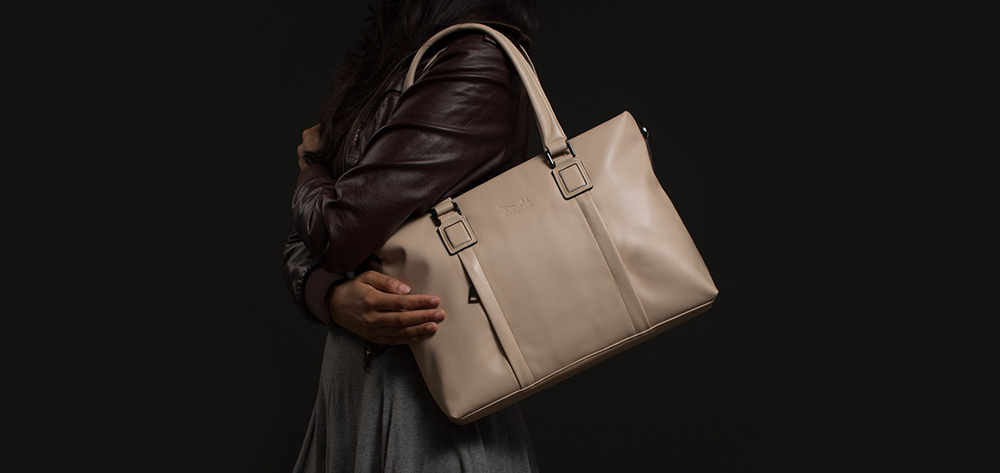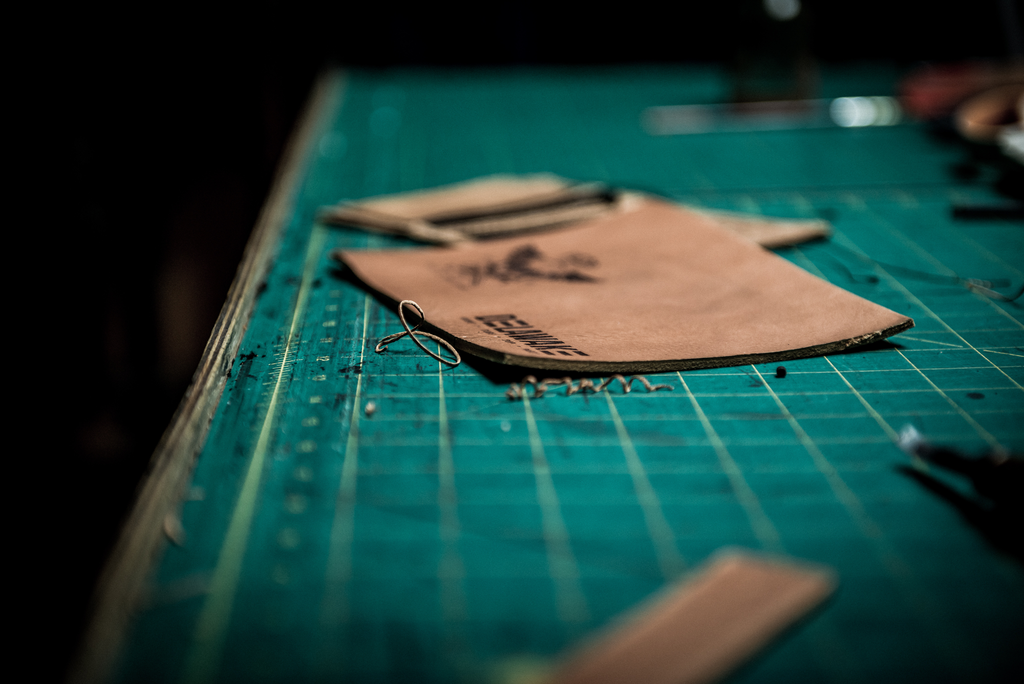In the fashion sphere, the vegan trend isn’t new—technically, our basic organic Vegan leather, for example, are vegan in that they contain no animal substances.
Faux leather is known as vegan leather because the material used is never from animal skins but although this is a huge benefit for animal activists, the manufacture of synthetic leather is not beneficial to the environment or humans due to the toxins in the plastics used to make them. The manufacture and disposal of PVC-based synthetics let out hazardous dioxins, which can cause developmental and reproductive issues and even cause cancer. The synthetics used in vegan leathers also don’t fully biodegrade, although they can be broken down to a degree, they can also release toxic particles and phthalates, which can affect the health of animals and the environment.
IS VEGAN LEATHER BETTER THAN REAL LEATHER?
Quality and durability are also important things to consider when comparing vegan and real leather. Vegan leather is often a lot thinner than real leather and much more light weight which is great for fashion as it makes it potentially easier to work with, however it also makes it less durable than real leather. A real, good quality leather can last decades when cared for, whereas you might only get a year or so out of a pair of shoes made from good quality faux leather. This is an important factor when deciding between fake leather and real leather as the environmental impact of replacing a fake leather product multiple times is arguably more damaging than the purchase of one real leather item.
Synthetic leathers also wear out very unattractively whereas real leather ages over time and forms a patina, which is considered to add character to leather.
Faux leather, especially PVC based, isn’t breathable either where as real leather has pores through which skin is able to breathe. So for clothing items such as jackets, vegan leather can be uncomfortable when worn for long periods of time.
In addition to environmental factors, faux leather is typically a lot cheaper than real leather products. This is because it’s cheaper to produce synthetic plastic leather than it is to produce real leather. The craftsmanship of leather products is a highly skilled job and bespoke leather products such as sofas, jackets and luggage can be thousands of dollars. Manufacturers are able to command these prices because they are considered both high quality and highly durable.
MAINTAINING VEGAN LEATHER
As vegan leather is made with a plastic coating, it is already waterproof. This makes it easier to clean by using a mild detergent or just by wiping it with a damp cloth, however it also means that conditioning products can’t penetrate it to stop it from drying up and cracking, which can happen if the fake leather is in the sun a lot and also if it’s a particularly poor quality material. However, you can get certain products, which will cover the surface of the plastic to prevent high temperatures and sun rays from cracking the surface. Such products can also help to soften the material.
HOW TO REPAIR VEGAN LEATHER
You can replace or patch up the damaged area with a faux leather repair kit that can be bought online – they’re easy to use and suited to different types of faux leather.
IS VEGAN LEATHER GOOD QUALITY?
Vegan leather can come in different standards of quality and as with real leather, the higher the quality, the longer it will last. Faux leather is generally a lot cheaper and of a lower quality to real leather, even at a high standard. Vegan leather is ultimately much less durable than real leather and tends to be thinner so it’s not uncommon for it to tear or scuff badly over time.
HOW TO UNWRINKLE VEGAN LEATHER
It is important that you do not try to iron wrinkled vegan leather by putting the iron directly onto the material. The method you should use to remove wrinkles depends on the quality of the material – because synthetic ‘pleathers’ have plastic in them, they do not mix well with heat and it can often ruin the product completely. High quality faux leathers can be steamed to remove wrinkles if protected with a sheet, towel or lining as they are much more forgiving against heat however there still should be a lot of care taken when doing this. It is important that you don’t heat your fake leather for more than 30 seconds.
HOW TO SHRINK VEGAN LEATHER
METHOD:
1. Wash the item in your washing machine on warm to clean off the article and prevent any contamination from ‘baking’ into the plastic material of the pleather.
2. Put the polyurethane item into an old pillowcase and tie off the top with a shoelace or piece of string to prevent it from falling out. Materials like this may get hot enough to stick to the dryer’s drum, damaging the jacket and making a mess, so avoid this happening at all costs.
3. Set the dryer on high. Let the cycle go for about an hour. Allow the jacket to cool off and then test fit it. Repeat the cycle as needed, using progressively shorter drying times until satisfied.
CAN YOU STRETCH VEGAN LEATHER
Faux leather does stretch, but not as much as real leather. You need to be careful when trying to stretch fake leather because it increases the risk of it cracking, so it’s best to avoid it all together.
CAN YOU DISTRESS VEGAN LEATHER?
Trying to distress faux leather will more often than not result in damaging the item. Most people tend to create a distressed affect on faux leather using thin layers of acrylic/fabric paints – thick layers can result in the vegan leather cracking and peeling the top layer entirely. Be sure to use paints/dyes suitable for the material, as solvents often eat away at pleather.
Remember to test the paint on a small inconspicuous area of the product first before applying all over.
HOW TO DYE VEGAN LEATHER
Faux leather is not as permeable as real leather, which means the material cannot easily absorb coloured dye. Therefore, even after dyeing your faux leather product you should be aware that the process will most likely need to be repeated throughout the products life span as the colour wears off over time.
METHOD:
1. Prepare the pleather surface by wiping it down with a clean cloth to remove any dust or dirt particles. For a thorough clean, it’s recommended to wipe the product down with pure alcohol.
2. Once clean and dry your vegan leather product is ready to be dyed with upholstery paint. Please see the instructions on the paint product for the recommended drying time.
Remember to test the paint on a small inconspicuous area of the product first before applying all over.
HOW TO SOFTEN VEGAN LEATHER
Vegan leather is less permeable than real leather, and therefore traditional leather conditioning products have little impact on softening the material. Vinyl conditioner is typically recommended to soften faux leather, and should be applied with a soft cloth in small circular motions. Excess conditioner should then be removed with a clean cloth before leaving the product to dry. The process can be repeated until the level of softness desired is achieved.
Main Image: Make Changed – Aspired




